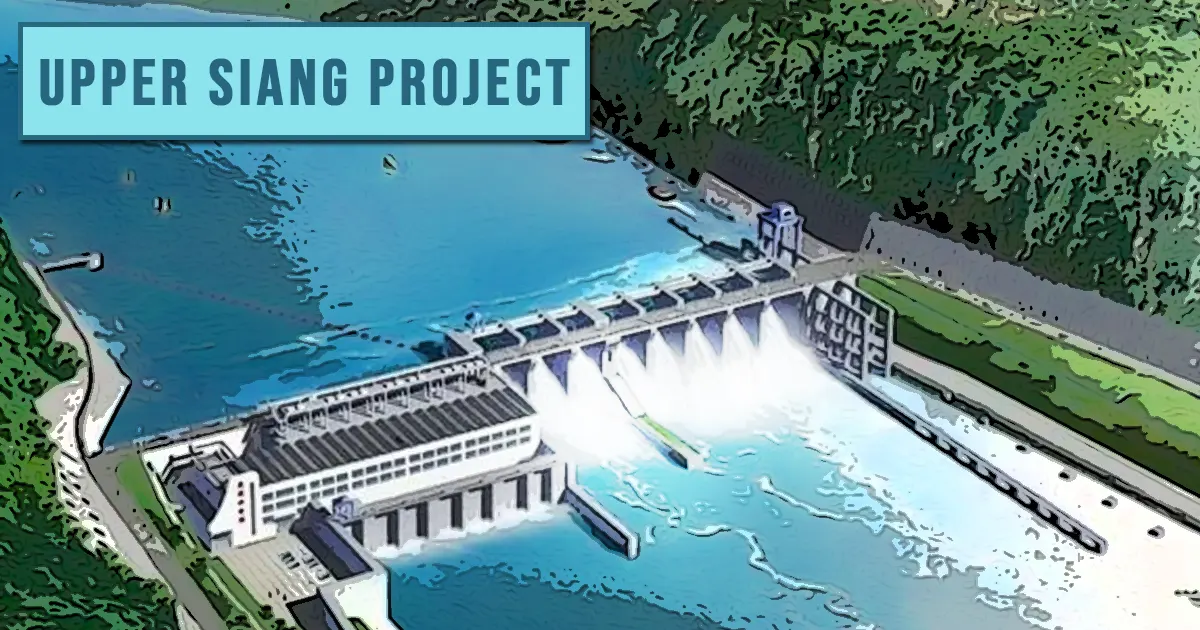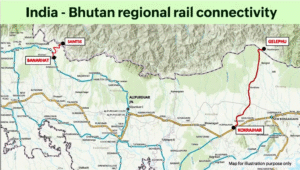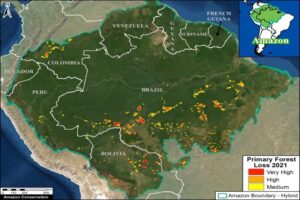
Upper Siang Hydropower Project in Arunachal Pradesh
Upper Siang Hydropower Project in Arunachal Pradesh: Protests, Strategy, and Geopolitical Concerns
Why in News
The 11.2 GW Upper Siang Hydropower Project in Arunachal Pradesh, initiated by the Ministry of Jal Shakti, has come into the spotlight again. Despite a pre-feasibility report ordered three years ago, the project has faced delays due to local opposition and geopolitical tensions. Now, with growing pressure due to China’s upstream activities near the India-China border, NHPC Ltd. has been directed to expedite site selection and project finalisation.
Introduction
The Upper Siang project is one of India’s largest proposed hydropower ventures aimed at utilizing the massive hydroelectric potential of the Siang River in Arunachal Pradesh. The project, however, is marred by local protests, environmental concerns, and strategic sensitivity due to its proximity to the Line of Actual Control (LAC) with China.
The project becomes especially relevant in the backdrop of China’s own 60 GW hydro project planned just 50 km upstream across the border in Medog County, Tibet. This development has pushed India to accelerate its own water infrastructure projects as a strategic counterbalance.
Point-wise Summary for CLAT and UPSC Aspirants
- Project Background
- The Ministry of Jal Shakti ordered a pre-feasibility report three years ago for the 11.2 GW Siang Upper Multipurpose Project.
- The project has been proposed on the Siang River, which is the name of the Brahmaputra River in Arunachal Pradesh before it enters Assam.
- Current Status
- The decision on the final project site has been delayed due to local issues, including protests by potentially displaced communities.
- The NHPC (National Hydroelectric Power Corporation) is now tasked with expediting the selection of the site for the project.
- Geopolitical Relevance
- The urgency is partly driven by China’s 60 GW hydro project in Medog County, Tibet, which is less than 50 km from the Indian border.
- China’s project poses a strategic and environmental risk for India’s northeastern water systems.
- Local Opposition
- Communities in the area are protesting due to:
- Fear of displacement
- Impact on biodiversity and forest cover
- Threat to tribal livelihoods and local ecology
- NHPC’s Next Steps
- NHPC has identified multiple potential sites using:
- Desk-based studies
- Satellite reconnaissance
- However, on-ground investigations are being delayed due to local protests.
- Despite opposition, the Centre is keen to push the project forward as part of its strategic infrastructure plans.
- Strategic Implications
- The project is seen as a hydrological counter to Chinese activity.
- It also feeds into India’s larger National Hydropower Mission, which seeks to increase green energy capacity and border infrastructure.
Legal and Constitutional Frameworks Involved
- Constitutional Provisions
- Article 48A: Directive Principle instructing the State to protect and improve the environment.
- Schedule VI: Protects the rights of tribal areas in northeastern states; any land acquisition must respect these rights.
- Article 243 ZD: Mandates the participation of local panchayats in planning for economic development, especially relevant to developmental projects in tribal belts.
- Environmental Laws
- Environment (Protection) Act, 1986: Requires Environmental Impact Assessment (EIA) for large infrastructure projects.
- Forest Rights Act, 2006: Recognises the traditional rights of forest-dwelling tribes, making displacement difficult without their consent.
- Legal Issues
- Possible PILs (Public Interest Litigations) by environmental and tribal rights groups.
- Conflict between strategic development vs. environmental sustainability and tribal autonomy.
Timeline of Events
Year | Event |
2022 | Ministry of Jal Shakti orders pre-feasibility report for Upper Siang Project |
2023 | NHPC initiates early desk surveys; local protests begin |
2024 | Reports of Chinese 60 GW hydro project surface |
2025 | NHPC directed to fast-track site selection amid protests and delays |
Key Locations Mentioned
- Siang River – Flows through Arunachal Pradesh, becomes Brahmaputra in Assam.
- Medog County (Tibet) – Where China is building a 60 GW dam project.
- Dite Dime and Ugeng – Potential sites under NHPC’s consideration.
- Upper Siang District, Arunachal Pradesh – Main project site, facing resistance.
Important Notes (Concept Clarifications)
- NHPC Ltd.: A government-run corporation responsible for hydroelectric power development in India.
- Pre-feasibility report: A study to assess whether a project is viable before detailed investigations.
- Strategic Infrastructure: Projects developed for both economic and security purposes, especially in border areas.
- Reconnaissance: Initial survey or examination of a region to collect data, usually before large projects or military actions.
Relevance for CLAT and UPSC Exams
This topic is highly relevant under the CLAT Current Affairs 2026 and UPSC General Studies curriculum. It links:
- Constitutional and legal provisions
- Environmental governance
- Federal-state relations (Centre pushing NHPC despite state-level protests)
- India-China border policy
- Infrastructure and energy development
Conclusion
The Upper Siang Hydropower Project is a test case for India’s balancing act between infrastructure expansion, environmental responsibility, and national security. As NHPC moves forward under government directives, it must navigate tribal opposition and ecological concerns carefully. For CLAT aspirants, this case offers a real-world blend of law, policy, geopolitics, and governance, all essential areas for legal awareness and general knowledge.




